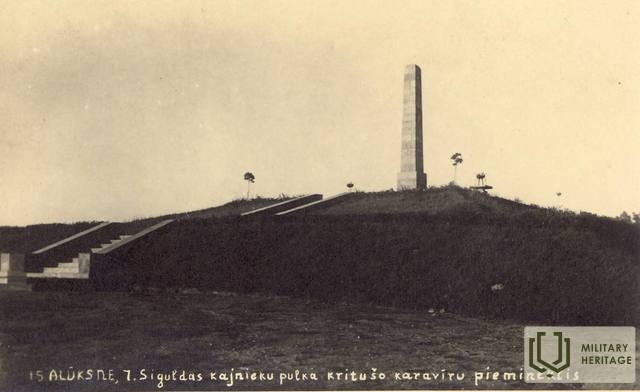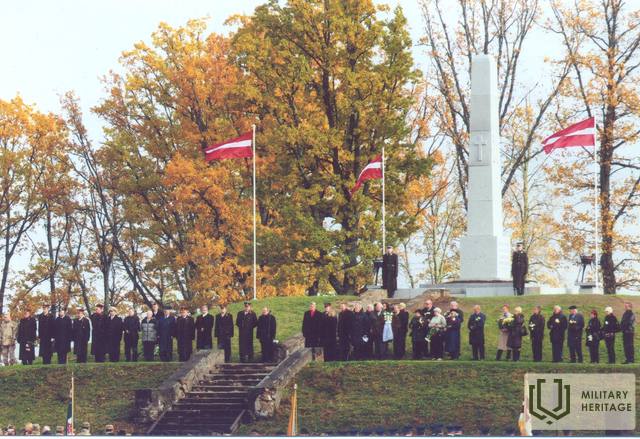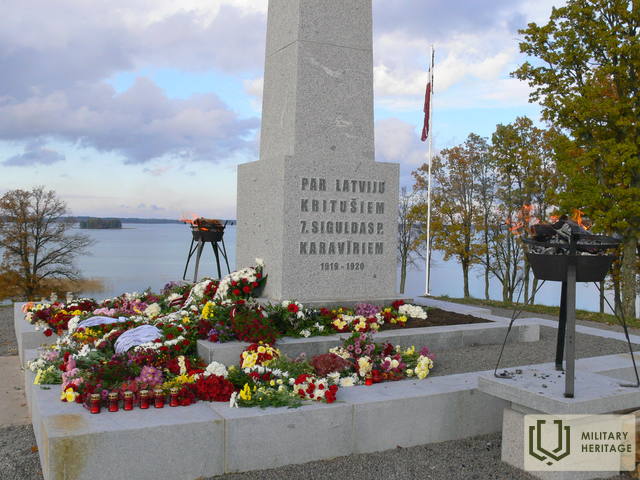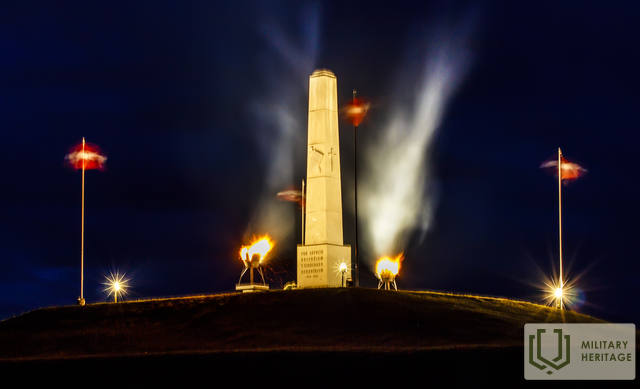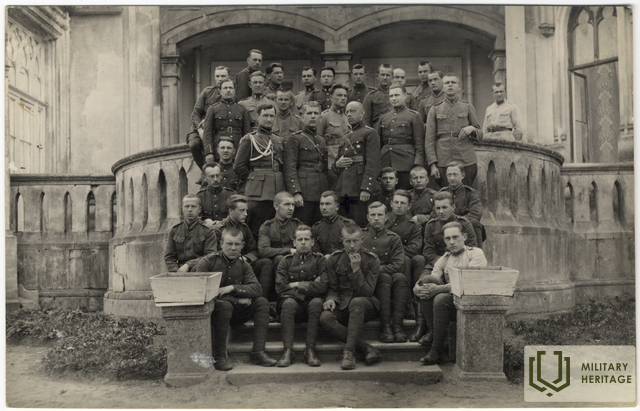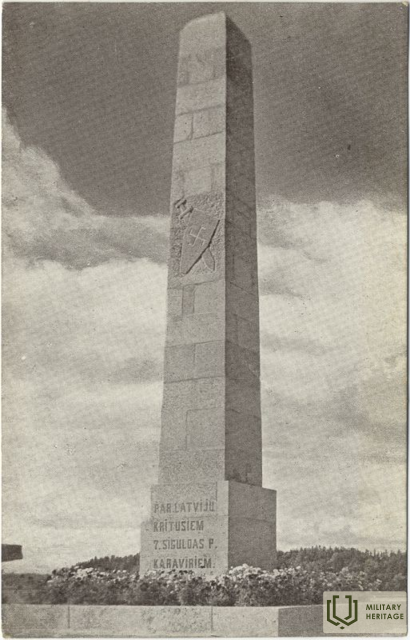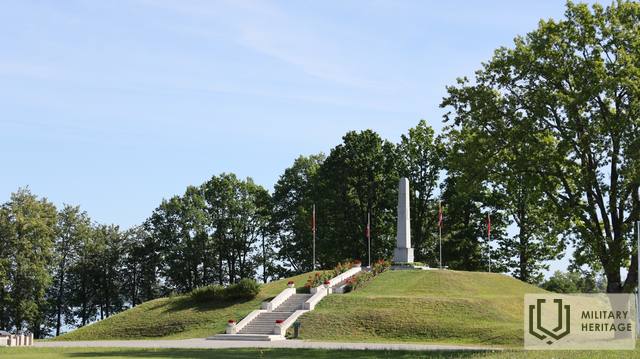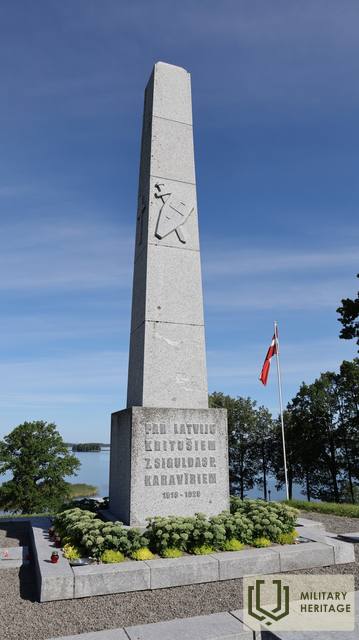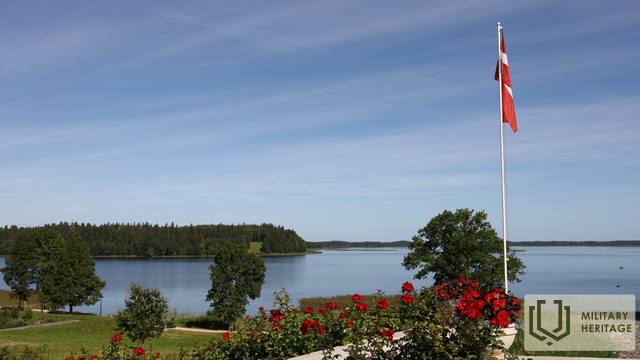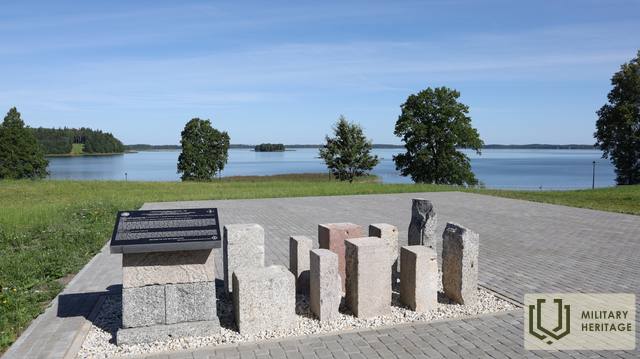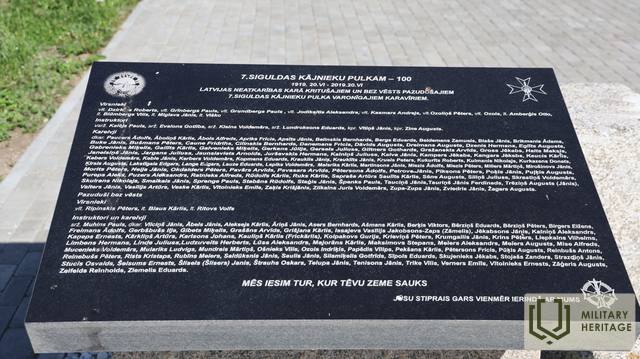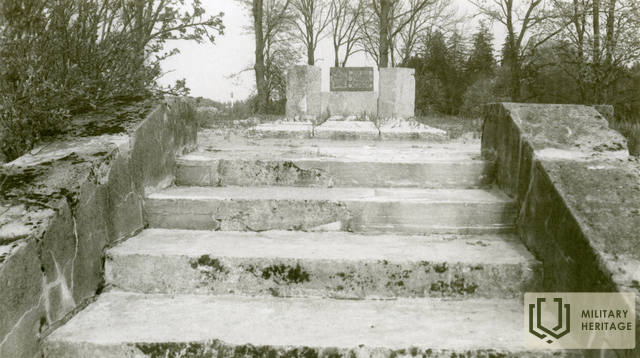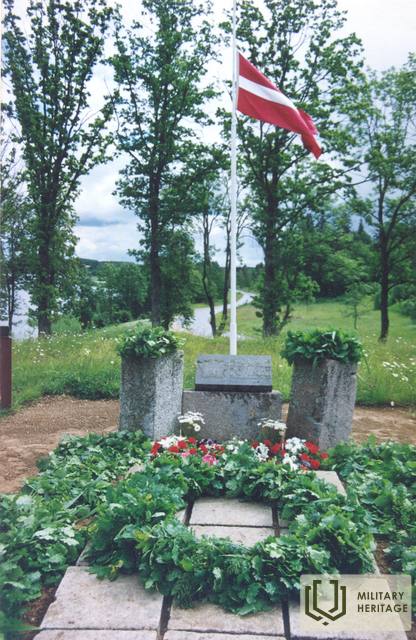Paminklas 7-ojo Siguldos pėstininkų pulko kariams, žuvusiems Latvijos Nepriklausomybės kare
Memorialinė vieta
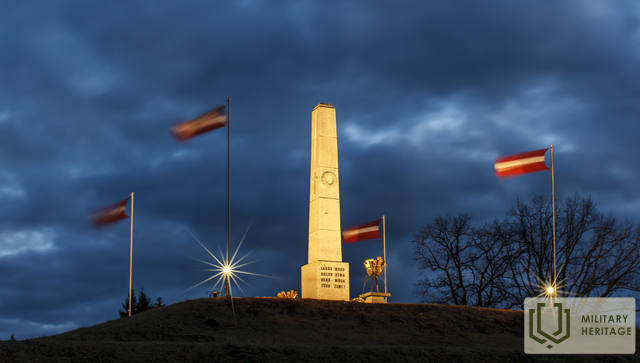

Įsikūręs Alūksnės ežero pakrantėje, Pskevo (Kolbergo) gatvės pusėje.
1923 metų birželio 22 dieną Latvijos prezidentas Jānis Čakste atidengė paminklą žuvusiems 7-ojo Siguldos pėstininkų pulko kariams. Paminklą sukūrė dailininkas Jūlijs Miesnieks.
Pulko kariai taip pat gerino ir tvarkė paminklo aplinką. Kareiviai prie paminklo rinkosi pulko metinių minėjimo išvakarėse, kai uždegdavo šventąją ugnį, taip pat pulko metinių dieną po parado ir užtarimo Garnizono kapinėse.
1940/1941 m. bolševikai pašalino ir sunaikino lentą, tačiau pats paminklas buvo nugriautas 1953 m., o jo akmenys įmūryti į kareivinių pastato kampinius pamatus.
Prasidėjus Atbudimui, 1989 m. rudenį buvo sutvarkyta teritorija aplink sunaikintą paminklą, kuris tuo metu dar buvo SSRS okupacinių kariuomenės teritorijoje. Lapkričio 11 d. buvusioje paminklo vietoje buvo atidengtas laikinas granito memorialas su išgraviruotu tekstu: „7-ojo Siguldos pėstininkų pulko paminklas šioje vietoje bus atkurtas 1989 m. lapkričio 11 d.“
Alūksnės brolių kapinių komiteto vadovo U. Veldre iniciatyva buvo pradėti paminklo restauravimo darbai, o restauruotas paminklas atidengtas 2009 m. spalio 16 d.
Skirtingai nuo originalaus paminklo, ant obelisko vietoj pulko krūtinės šarvų buvo sukurtas kryžius. Abu paminklo reljefus nukalė skulptorius Ainārs Zelčs. Restauruotam paminklui panaudotos tiek 22 originalių obelisko blokų dalys, rastos Nacionalinių ginkluotųjų pajėgų pėstininkų mokyklos teritorijoje, tiek naujai pagaminti blokai.
2019 m. birželio 20 d., minint 7-ojo Siguldos pėstininkų pulko šimtmečio jubiliejų, paminklo kalnelio papėdėje buvo atidengta pulko paminklo atminimo vieta ir granito atminimo lenta žuvusiems dalinio kariams, ant kurios išgraviruotas tekstas: „Jūsų stipri dvasia visada su mumis...“. Atminimo vieta pastatyta Nacionalinių ginkluotųjų pajėgų Pėstininkų mokyklos personalo paaukotomis lėšomis.
Panaudoti šaltiniai ir literatūra:
Siguldos pulko atminimo fondas. Siguldos pulko atminimui, 1919 m. 20.-VI 1959 m. Nebraska 1959, p. 15–22.
Lismanis, J. 1915–1920. Mūšių ir žuvusių kareivių atminimui: Pirmojo pasaulinio karo ir Latvijos išsivadavimo kovų memorialinės vietos. Ryga 1999, p. 18
Latvijos prezidentas vakar Alūksnėje atidengė atnaujintą paminklą, skirtą žuvusiems 7-ojo Siguldos pėstininkų pulko kariams. Prieinama: eDruva: Cėsių ir Vidžemės naujienos. 2009-10-17.
Paminklas Alūksnėje žuvusiems 7-ojo Siguldos pėstininkų pulko kariams. Latvijos karių kapinės ir atminimo vietos. Prieinama: https://karavirukapi.blogspot.com
Susijusi laiko juosta
Susijusios temos
Susijusi istorija
7. Siguldos pėstininkų pulko formavimas
1919 m. birželio 20 d. Naukšėnų dvare, netoli Rūjienos, Šiaurės Latvijos brigados vado pulkininko Jorgio Zemitano įsakymu pradėtas formuoti 7-asis Siguldos pėstininkų pulkas. Iš pradžių iš Šiaurės Latvijos brigados rezervinio bataliono buvo suformuota nedidelė kovinė grupė, susidedanti iš 22 karininkų ir 1580 kareivių, kuri, pagerbiant pirmąjį vadą Oskarą Dankerį, buvo pavadinta Dankerio divizija. Po kelių dienų divizija buvo įtraukta į 3-iojo Jelgavos pulko 2-ąjį batalioną, o rugpjūčio 23 d., pridėjus kuopą, – į 7-ąjį Siguldos pėstininkų pulką.
Atminimo akimirka Garisono kapinėse
Atkūrus Latvijos nepriklausomybę, Alūksnės brolių kapinių komiteto vadovas Uldis Veldre ėmėsi rūpintis Garnizono kapinių priežiūra, nustatyti su Alūksne susijusias LKOK poilsio vietas ir įrengti atminimo ženklus Garnizono kapinėse.




